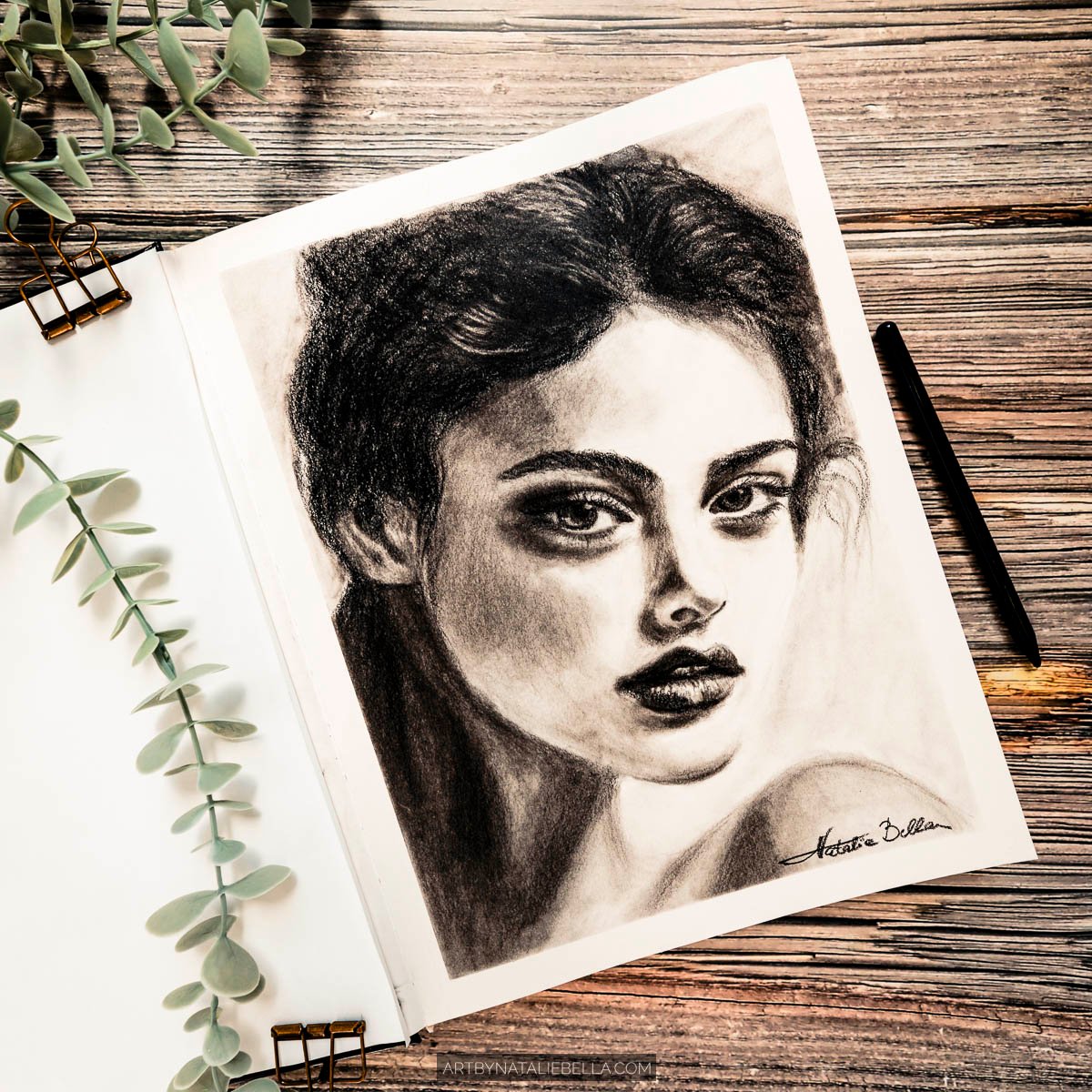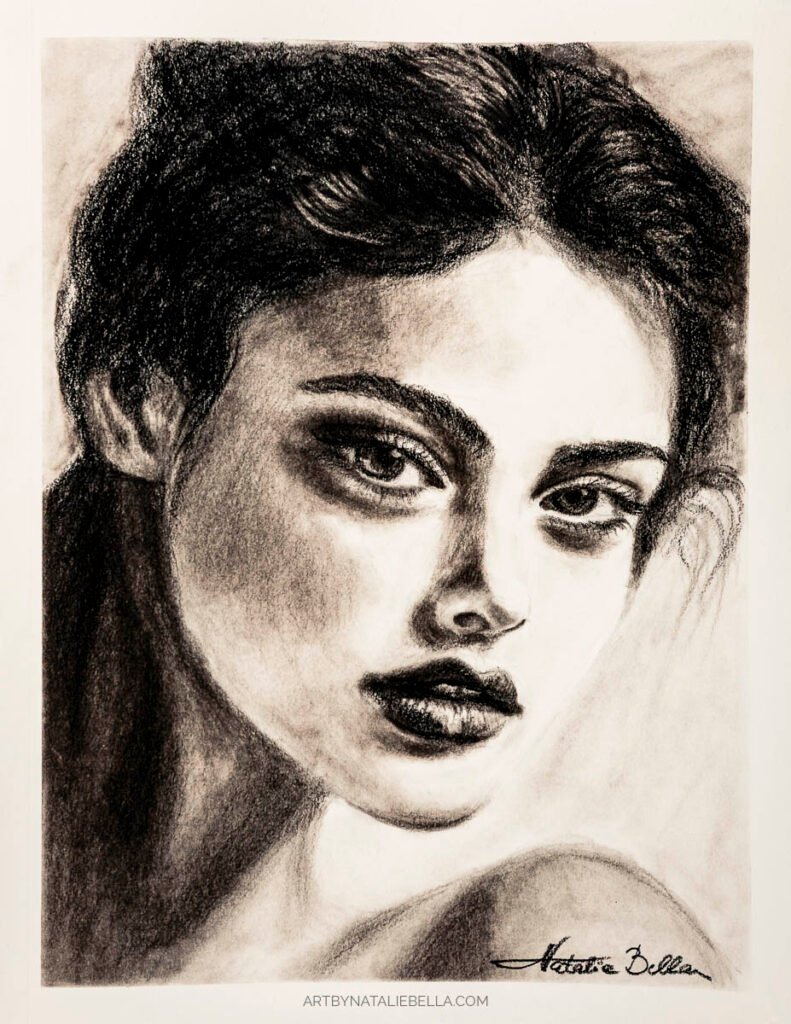Address
304 North Cardinal
St. Dorchester Center, MA 02124
Work Hours
Monday to Friday: 7AM - 7PM
Weekend: 10AM - 5PM
Address
304 North Cardinal
St. Dorchester Center, MA 02124
Work Hours
Monday to Friday: 7AM - 7PM
Weekend: 10AM - 5PM
Why do faces captivate us in art? An artist explores the psychology of portrait art and our deep human connection to faces.

There’s something magnetic about a face, isn’t there?
Whether I’m walking through a gallery or scrolling through social media, my eyes always find their way to portraits first. Even in a room full of stunning landscapes and abstract pieces, it’s the faces that stop me in my tracks. And I know I’m not alone in this—there’s something deeply human about our pull toward eyes, expressions, and the stories written in the lines of someone’s face.
I’ve been thinking about this a lot lately, especially while working on this charcoal portrait. As my pencil moved across the paper, capturing the subtle shadows around her eyes and the gentle curve of her lips, I realized I was doing more than just drawing features. I was trying to capture something much deeper—the quiet presence that lives behind her gaze.
Scientists say we’re hardwired to recognize faces from the moment we’re born. A newborn baby will turn toward a face-like pattern over any other shape. It’s as if we come into this world already knowing that faces hold the key to connection, safety, and understanding.
But I think there’s something even more profound happening when we’re drawn to portraits. When we look at a face—whether it’s someone we know or a stranger captured in charcoal and paper—we’re looking for ourselves. We’re searching for that spark of recognition, that moment when we see our own humanity reflected back.
Every face tells a story that words can’t quite capture. The way someone’s eyes crinkle when they smile. The thoughtful pause before they speak. The dreams they carry and the experiences that have shaped them. These aren’t things you can put into sentences, but somehow, they live in the curve of a cheekbone or the tilt of a head.
When I’m working on a portrait, something beautiful happens. The world gets quiet, and I start to notice things I’ve never seen before. The way light catches the edge of an eyelash. How shadows pool in the hollow of a collarbone. The subtle asymmetry that makes each face completely unique.
But more than that, I start to sense the person behind the features. There’s a stillness that settles over me as I work, like I’m having a conversation without words. Each mark I make feels like I’m learning something new about who this person is—their strength, their gentleness, their quiet complexities.
I think this is why portrait work feels so sacred to me. I’m not just copying what I see; I’m trying to honor the fullness of someone’s being. Every person carries within them a lifetime of moments—first loves, quiet victories, gentle sorrows, bursts of joy. And somehow, when we really look, really see, some of that essence finds its way onto the paper.
Here’s what I find most fascinating: when people look at portraits, they often see something of themselves. A mother sees her daughter’s eyes in a stranger’s face. Someone recognizes their own searching expression in a drawing of someone they’ve never met.
It’s like each face becomes a mirror, reflecting back our shared humanity. We see our own capacity for love, for wonder, for resilience. We recognize the part of ourselves that hopes, that dreams, that carries on despite everything.
Maybe that’s why we’re so drawn to faces—both as artists who want to capture them and as viewers who can’t look away. In every portrait, we’re reminded that we’re not alone in this experience of being human. Someone else has felt what we’ve felt, seen what we’ve seen, carried what we’ve carried.

The woman in this drawing—I don’t know her story. I don’t know what makes her laugh or what keeps her awake at night. But when I look at her eyes, I see something familiar. A quiet strength. A gentle awareness. The same spark that lives in all of us.
That’s the magic of portraits, I think. They remind us that every face we pass on the street, every person we encounter, is carrying their own beautiful, complex story. And in seeing them—really seeing them—we come to understand our own stories a little better too.
The next time you find yourself drawn to a face in a painting or stopping to really look at someone, remember this: you’re not just seeing features and expressions. You’re witnessing the profound mystery of what it means to be human. And that’s something worth capturing, whether in charcoal, in memory, or simply in the way we choose to see each other.
What do you see when you really look at someone? I’d love to hear your thoughts in the comments below.